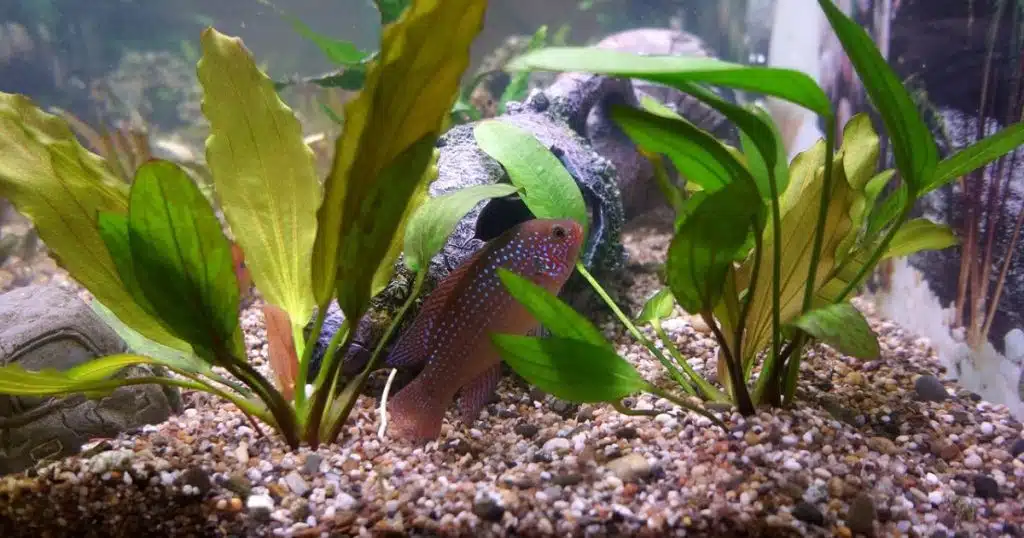As an Amazon Associate I earn from qualifying purchases.
Ammonia in fish tanks can be a grave concern for aquatic life, leading to stress, illness, and even death among fish. Controlling ammonia levels is crucial for keeping a fish tank healthy and ensuring a thriving aquarium environment. This article will guide you through recognizing the signs of ammonia buildup, understanding its causes, and exploring both chemical and natural methods to manage and reduce these levels.

Signs of too Much Ammonia in Fish Tank
High ammonia levels in an aquarium often manifest through clear signs from your fish and the tank environment:
- Fish Symptoms: Gasping at the surface, lethargy, and unusual swimming patterns.
- Physical Signs: Red or inflamed gills, and fish may die without visible symptoms.
- Tank Indicators: Cloudy water and foul smell can also indicate ammonia problems.
What Causes High Ammonia Levels in Fish Tank
Ammonia levels can rise due to several factors
- Overfeeding: Excess food decays and produces ammonia.
- Overstocking: More fish produce more waste, which breaks down into ammonia.
- Inadequate Filtration: Poor filtration fails to remove waste products, allowing ammonia to accumulate.
- Infrequent Water Changes: Without regular changes, ammonia from waste builds up in the water.
Reduce Ammonia in a Fish Tank
Ammonia (NH3) is a toxic compound that results from the breakdown of fish waste, uneaten food, and decomposing plants in your fish tank. In high concentrations, it can harm fish gills and organs, leading to disease or death.
There are several effective strategies to reduce ammonia in your aquarium:
Chemical Solution
Chemical solutions like Ammonia Detoxifiers and Zeolite Crystals neutralize or absorb ammonia, offering quick relief. Activated Carbon and Ammonia-Removing Filter Media improve water quality, while Water Conditioners treat new water during changes. However, these are temporary fixes; combine them with natural, preventative strategies like regular maintenance and biological filtration for lasting ammonia control.
Regular Water Changes
Perform weekly 50% water changes to remove accumulated waste and toxins. This not only reduces ammonia levels but also improves overall water quality and oxygen levels in the tank.
Live Plants
Adding live plants like Anubias, Java Fern, or Elodea helps absorb ammonia as they grow, using it as a nutrient. Live plants also increase oxygen levels, further supporting tank health and reducing ammonia buildup.
Cycling the Tank
To cycle your tank, add an ammonia source, monitor ammonia, nitrite, and nitrate levels, and wait 4-6 weeks for stability. Once levels are safe, perform regular maintenance to sustain a healthy, biologically balanced environment for your fish.
Expert Insights on Managing Ammonia
Dr. Jane Smith, a renowned marine biologist, emphasizes the importance of biological balance in aquariums. She notes, “Regularly testing your water parameters is crucial. Ammonia spikes can be a sign of underlying issues with tank maintenance or biological filtration inefficiencies.”
Veterinarian Dr. Mike Brown adds, “In addition to water changes and proper feeding practices, consider introducing ammonia-absorbing plants. They enhance aesthetic appeal while actively improving water quality.”
Amazon and the Amazon logo are trademarks of Amazon.com, Inc, or its affiliates.
Leave a Reply